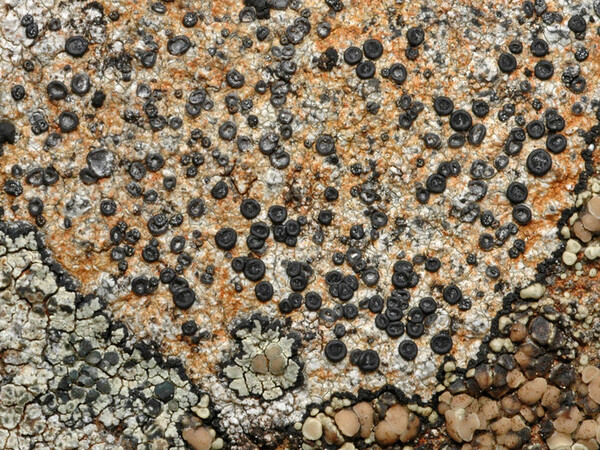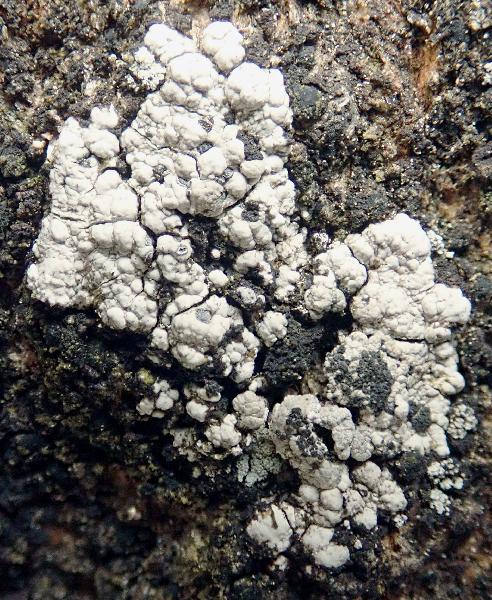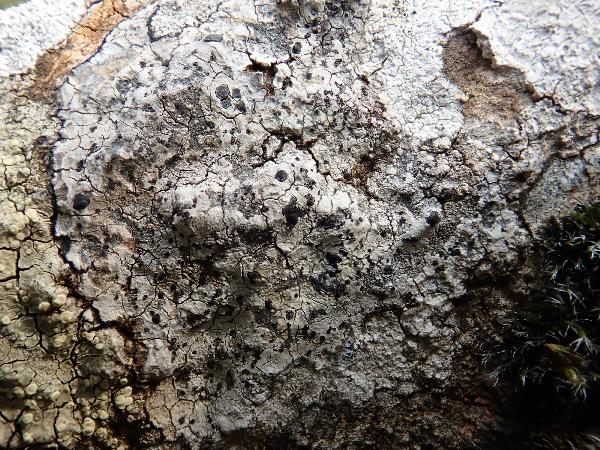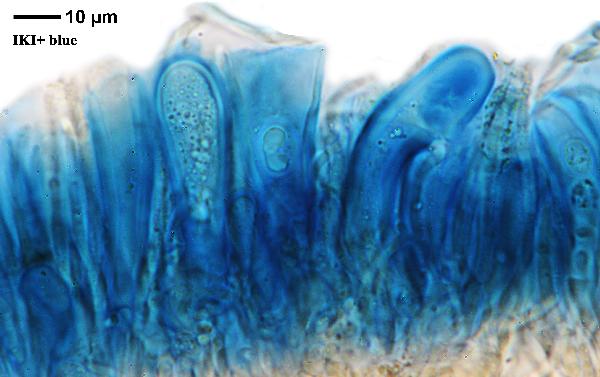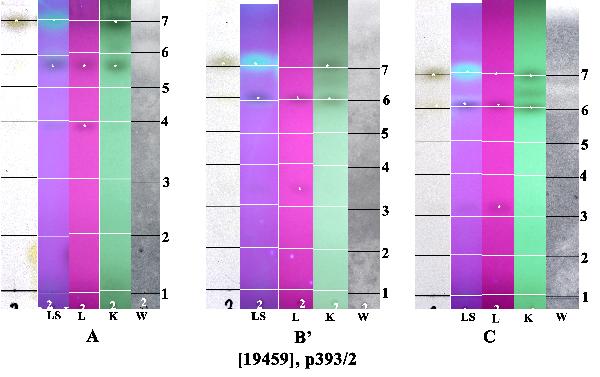Porpidia cinereoatra (Ach.) Hertel & Knoph
in Hertel, Beih. Nova Hedwigia, 79: 437, 1984. Basionym: Lecidea cinereoatra Ach. - Lichenogr. Univ.: 167, 1810.
Synonyms: Haplocarpon cinereoatrum (Ach.) M. Choisy; Haplocarpon musivum (Körb.) Vězda; Huilia cinereoatra (Ach.) Hertel; Huilia macrocarpa var. convexa (Fr.) Hertel; Huilia musiva (Körb.) Vězda; Lecidea albocaerulescens auct. non (Wulfen) Ach.; Lecidea contigua (Hoffm.) Fr. non auct.; Lecidea convexa (Fr.) Th. Fr.; Lecidea macrocarpa var. convexa (Fr.) H. Magn.; Lecidea musiva Körb.; Lecidea ochrochlora Ach.; Porpidia herteliana Gowan; Porpidia musiva (Körb.) Hertel & Knoph
Description: Thallus crustose, episubstratic, usually thick, cracked to verrucose-areolate, the areoles 0.5-1.5(-2) mm wide, flat to convex, whitish to ash-grey, sometimes delimited by a black prothallus. Medulla white, I-. Apothecia lecideine,(0.3-)0.5-1.5(-2) mm across, isolated or in small clusters and sometimes confluent, most often immersed in the thallus, with a black, flat to convex, grey-blue pruinose to finally epruinose disc and a c. 0.05 mm thick, barely raised proper margin which is often excluded in old apothecia. Proper exciple dark brown to brown-black in outer part, with a paler brown medulla most evident in young apothecia, the excipular hyphae 3-5 mm thick; epithecium olive-brown to olive-green, K-, N+ orange-red; hymenium colourless, (75-)90-110 µm high; paraphyses coherent, richly branched and anastomosing; hypothecium dark. Asci 8-spored, elongate-clavate, with a thin, outer amyloid layer and a thickened tholus penetrated by a pore, the sides of which are strongly amyloid, Porpidia-type. Ascospores 1-celled, hyaline, ellipsoid, 12-18 x 6-10 µm. Photobiont chlorococcoid. Spot tests: thallus and medulla K-, C-, KC-, P-; medulla faintly K/UV+ mauve. Chemistry: confluentic acid (major), 2’-O-methylperlatolic acid (minor), traces of 2'-0-methylmicrophyllinic acid.
Growth form: Crustose
Substrata: rocks
Photobiont: green algae other than Trentepohlia
Reproductive strategy: mainly sexual
Poorly known taxon in need of further study
Commonnes-rarity: (info)
Alpine belt: absent
Subalpine belt: very rare
Montane belt: rather rare
Dry submediterranean belt: rare
Humid submediterranean belt: rather common
Padanian area: absent
pH of the substrata:
1 2 3 4 5
Solar irradiation:
1 2 3 4 5
Aridity:
1 2 3 4 5
Eutrophication:
1 2 3 4 5
Poleotolerance:
0 1 2 3
Altitudinal distribution:
1 2 3 4 5 6
Rarity
absent
extremely rare
very rare
rare
rather rare
rather common
common
very common
extremely common
Loading data...
Occurrence data
Predictive map
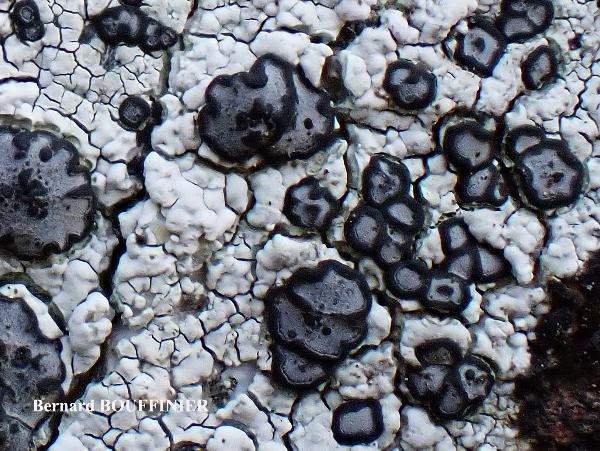
Bernard Bouffinier - Source: http://www.lichensmaritimes.org/index.php?task=fiche&lichen=158&lang=en
France, Commana
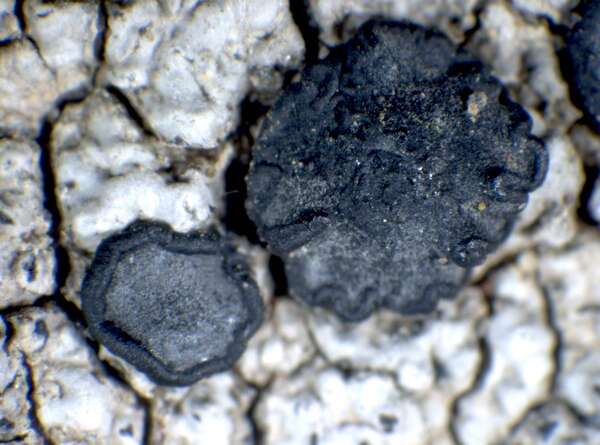
P.L. Nimis; Owner: Department of Life Sciences, University of Trieste
Herbarium: TSB (17311)
2001/11/29
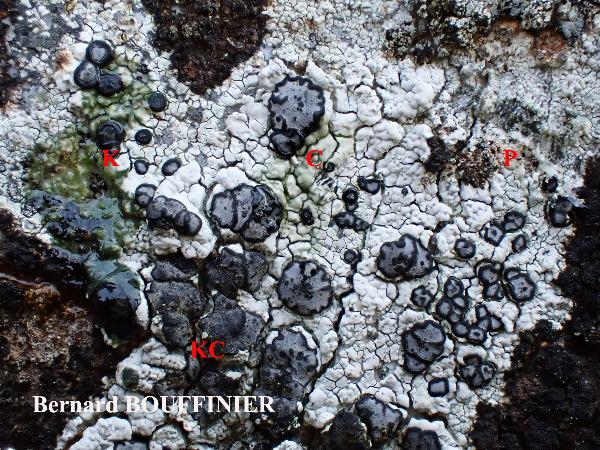
Bernard Bouffinier - Source: http://www.lichensmaritimes.org/index.php?task=fiche&lichen=158&lang=en
France, Commana
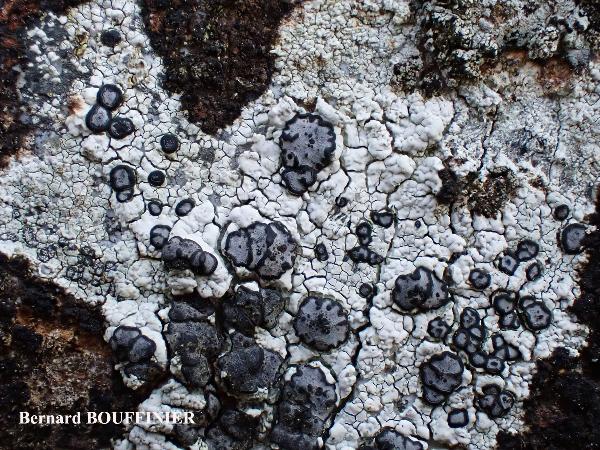
Bernard Bouffinier - Source: http://www.lichensmaritimes.org/index.php?task=fiche&lichen=158&lang=en
France, Commana
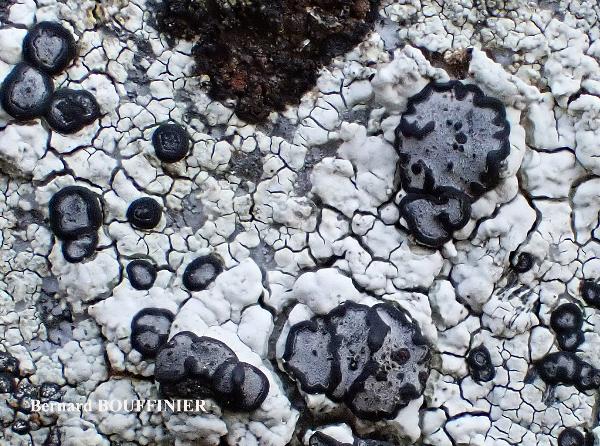
Bernard Bouffinier - Source: http://www.lichensmaritimes.org/index.php?task=fiche&lichen=158&lang=en
France, Commana
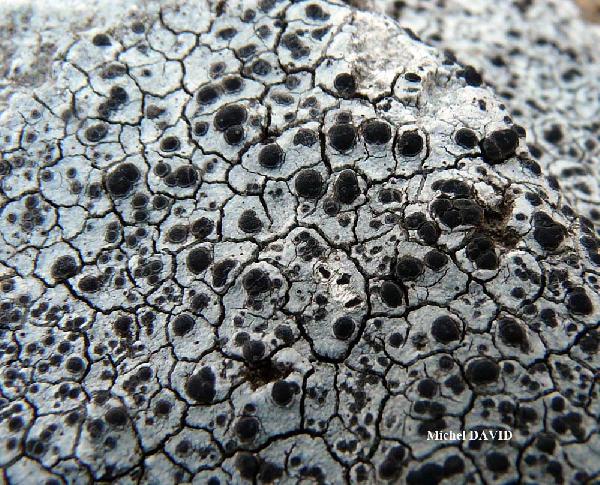
Michel David - Source: http://www.lichensmaritimes.org/index.php?task=fiche&lichen=158&lang=en
France, Hôpital Camfrout

Felix Schumm - CC BY-SA 4.0
ABL79660], Brazil, Santa Catarina, Urubici, near Pedra Furada State
Park, on siliceous rock. 28°04'16'' S, 49°30'41'' W, 1400 m. Leg. A.
Aptroot (no 79660), 19 July 2019, det. A. Aptroot 2019. - Thallus
crcked to verrucose-areolate, dirty creamish white or ashy grey; medulla
I-. Apothecia numerous, irregularly scattered or 2-6 confluent. Epithecium
blue-green. Spores 12-18 x 6-9 μm. Chemistry: medulla P-, K-,
C-; confluentic acid, 2'-O-methylperlatolic acid (trace), 2'-O-methylmicrophyllinic
acid (trace).
Porpidia
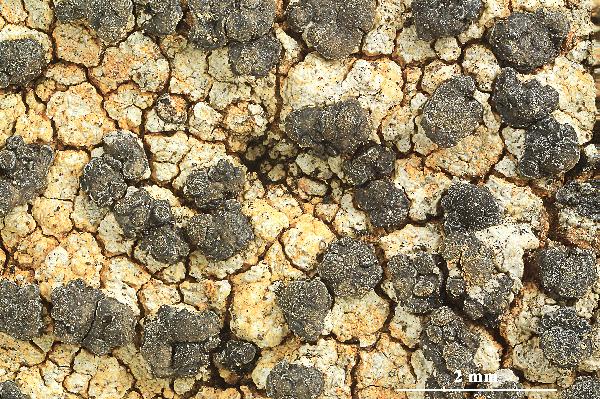
Felix Schumm - CC BY-SA 4.0
ABL79660], Brazil, Santa Catarina, Urubici, near Pedra Furada State
Park, on siliceous rock. 28°04'16'' S, 49°30'41'' W, 1400 m. Leg. A.
Aptroot (no 79660), 19 July 2019, det. A. Aptroot 2019. - Thallus
crcked to verrucose-areolate, dirty creamish white or ashy grey; medulla
I-. Apothecia numerous, irregularly scattered or 2-6 confluent. Epithecium
blue-green. Spores 12-18 x 6-9 μm. Chemistry: medulla P-, K-,
C-; confluentic acid, 2'-O-methylperlatolic acid (trace), 2'-O-methylmicrophyllinic
acid (trace).
Porpidia
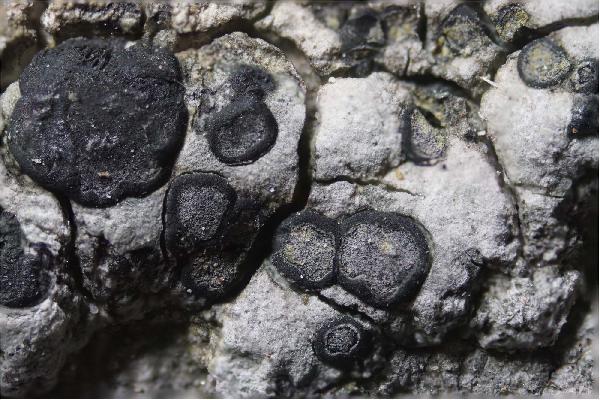
Marta González Garcia - Centro de Estudios Micologicos Asturianos
Playa de España (Villaviciosa-Asturias), 8-IV-2025, en rocas ácidas, leg. & det. M. González, MGG-207.
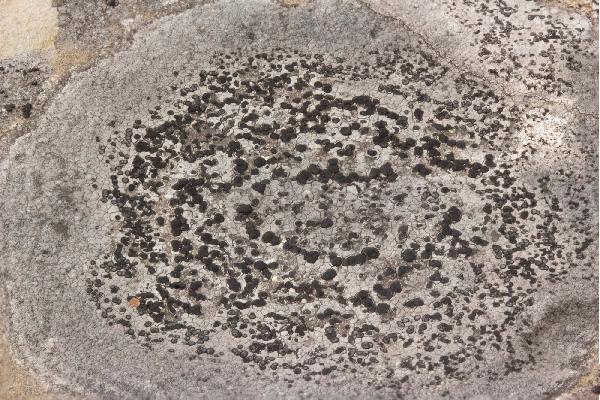
Marta González Garcia - Centro de Estudios Micologicos Asturianos
Playa de España (Villaviciosa-Asturias), 8-IV-2025, en rocas ácidas, leg. & det. M. González, MGG-207.

Marta González Garcia - Centro de Estudios Micologicos Asturianos
Playa de España (Villaviciosa-Asturias), 8-IV-2025, en rocas ácidas, leg. & det. M. González, MGG-207.
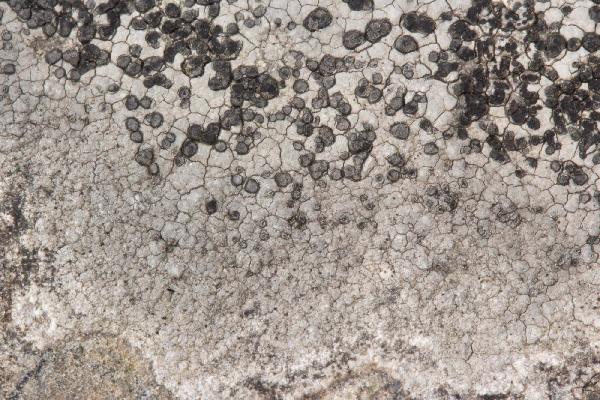
Marta González Garcia - Centro de Estudios Micologicos Asturianos
Playa de España (Villaviciosa-Asturias), 8-IV-2025, en rocas ácidas, leg. & det. M. González, MGG-207.
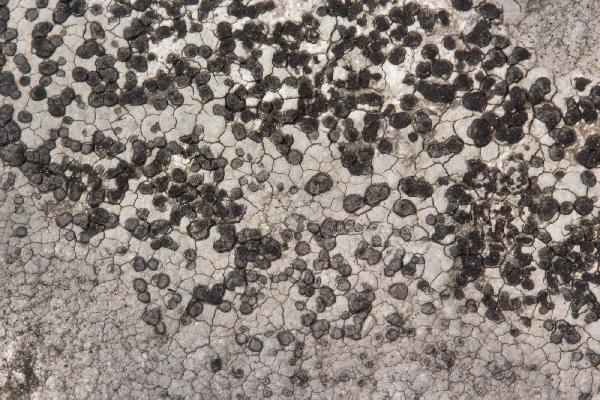
Marta González Garcia - Centro de Estudios Micologicos Asturianos
Playa de España (Villaviciosa-Asturias), 8-IV-2025, en rocas ácidas, leg. & det. M. González, MGG-207.

Marta González Garcia - Centro de Estudios Micologicos Asturianos
Playa de España (Villaviciosa-Asturias), 8-IV-2025, en rocas ácidas, leg. & det. M. González, MGG-207.
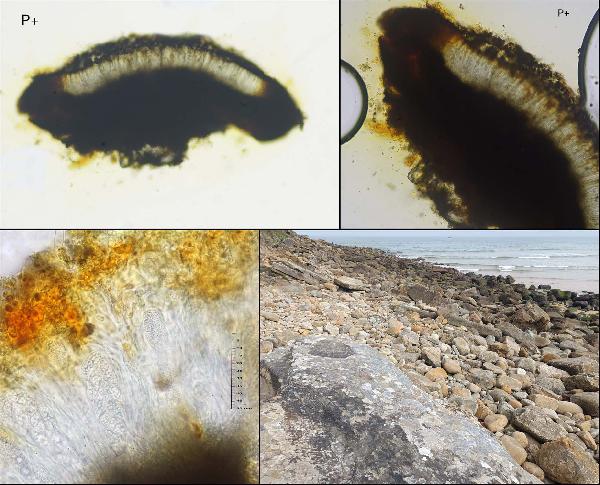
Marta González Garcia - Centro de Estudios Micologicos Asturianos
Playa de España (Villaviciosa-Asturias), 8-IV-2025, en rocas ácidas, leg. & det. M. González, MGG-207.
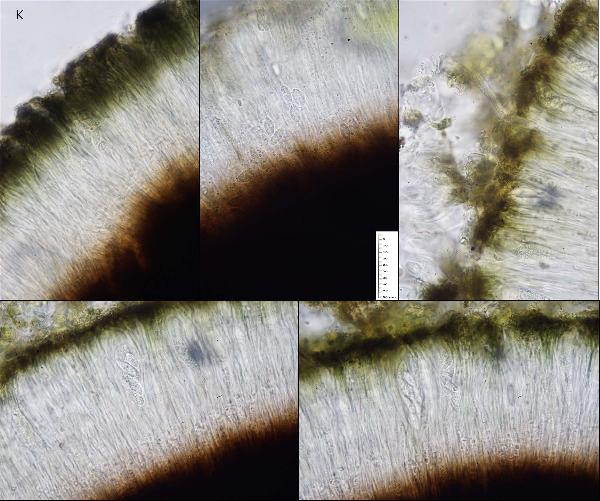
Marta González Garcia - Centro de Estudios Micologicos Asturianos
Playa de España (Villaviciosa-Asturias), 8-IV-2025, en rocas ácidas, leg. & det. M. González, MGG-207.

Marta González Garcia - Centro de Estudios Micologicos Asturianos
Playa de España (Villaviciosa-Asturias), 8-IV-2025, en rocas ácidas, leg. & det. M. González, MGG-207.
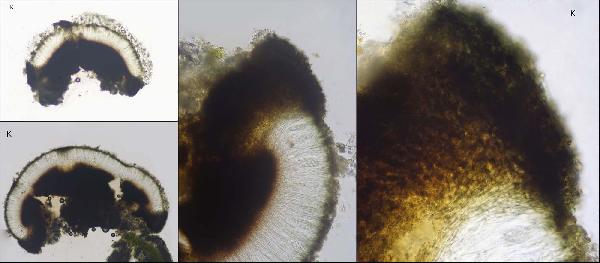
Marta González Garcia - Centro de Estudios Micologicos Asturianos
Playa de España (Villaviciosa-Asturias), 8-IV-2025, en rocas ácidas, leg. & det. M. González, MGG-207.
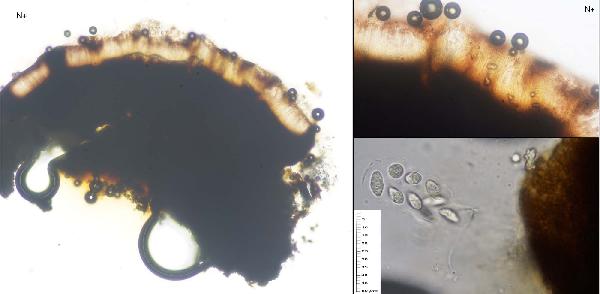
Marta González Garcia - Centro de Estudios Micologicos Asturianos
Playa de España (Villaviciosa-Asturias), 8-IV-2025, en rocas ácidas, leg. & det. M. González, MGG-207.
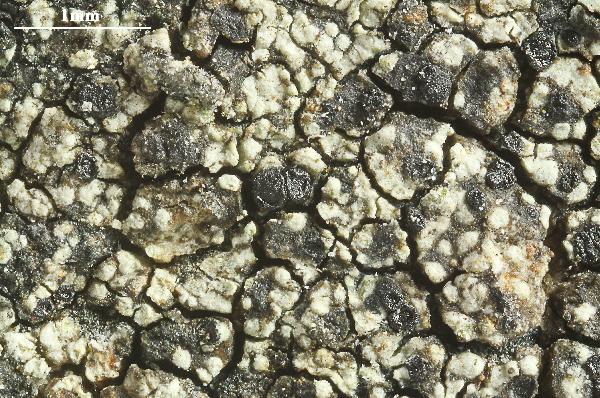
Felix Schumm - CC BY-SA 4.0
[19459], Germany, Hessen, Amöneburg bei Marburg, sonnige Basaltblöcke
in einer Hangwiese kurz vor dem Ortseingang, 50.7896° N,
8.91995° E, 324 m. Leg. F. Schumm, 01.08.2016, det. F. Schumm.
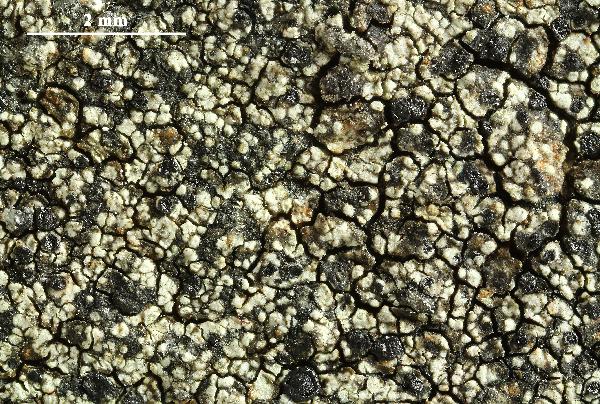
Felix Schumm - CC BY-SA 4.0
[19459], Germany, Hessen, Amöneburg bei Marburg, sonnige Basaltblöcke
in einer Hangwiese kurz vor dem Ortseingang, 50.7896° N,
8.91995° E, 324 m. Leg. F. Schumm, 01.08.2016, det. F. Schumm.
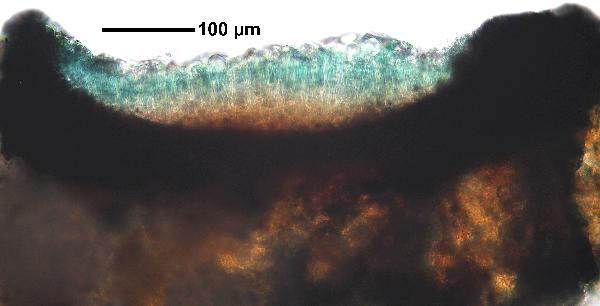
Felix Schumm - CC BY-SA 4.0
[19459], Germany, Hessen, Amöneburg bei Marburg, sonnige Basaltblöcke
in einer Hangwiese kurz vor dem Ortseingang, 50.7896° N,
8.91995° E, 324 m. Leg. F. Schumm, 01.08.2016, det. F. Schumm.

Felix Schumm - CC BY-SA 4.0
[19459], Germany, Hessen, Amöneburg bei Marburg, sonnige Basaltblöcke
in einer Hangwiese kurz vor dem Ortseingang, 50.7896° N,
8.91995° E, 324 m. Leg. F. Schumm, 01.08.2016, det. F. Schumm.
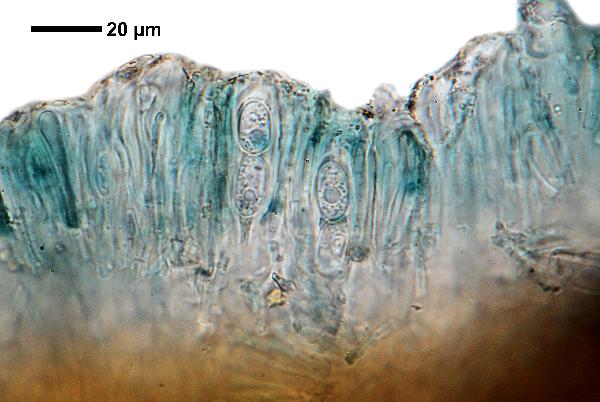
Felix Schumm - CC BY-SA 4.0
[19459], Germany, Hessen, Amöneburg bei Marburg, sonnige Basaltblöcke
in einer Hangwiese kurz vor dem Ortseingang, 50.7896° N,
8.91995° E, 324 m. Leg. F. Schumm, 01.08.2016, det. F. Schumm.
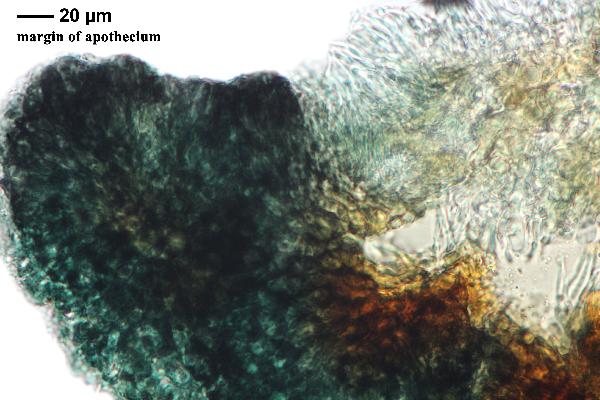
Felix Schumm - CC BY-SA 4.0
[19459], Germany, Hessen, Amöneburg bei Marburg, sonnige Basaltblöcke
in einer Hangwiese kurz vor dem Ortseingang, 50.7896° N,
8.91995° E, 324 m. Leg. F. Schumm, 01.08.2016, det. F. Schumm.
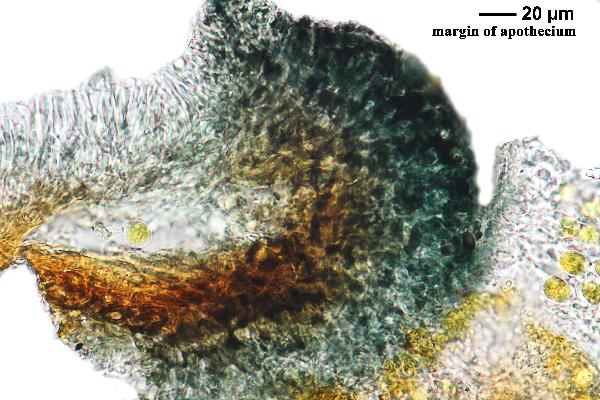
Felix Schumm - CC BY-SA 4.0
[19459], Germany, Hessen, Amöneburg bei Marburg, sonnige Basaltblöcke
in einer Hangwiese kurz vor dem Ortseingang, 50.7896° N,
8.91995° E, 324 m. Leg. F. Schumm, 01.08.2016, det. F. Schumm.
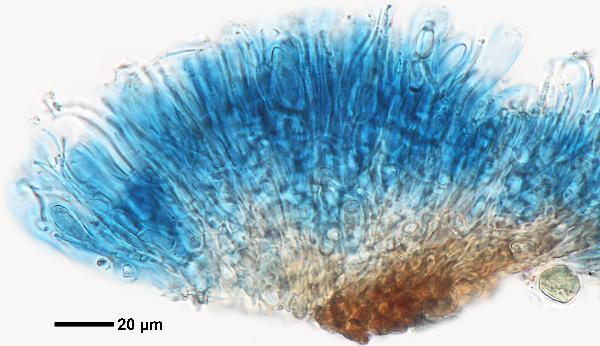
Felix Schumm - CC BY-SA 4.0
[19459], Germany, Hessen, Amöneburg bei Marburg, sonnige Basaltblöcke
in einer Hangwiese kurz vor dem Ortseingang, 50.7896° N,
8.91995° E, 324 m. Leg. F. Schumm, 01.08.2016, det. F. Schumm.
Growth form: Crustose
Substrata: rocks
Photobiont: green algae other than Trentepohlia
Reproductive strategy: mainly sexual
Poorly known taxon in need of further study
Commonnes-rarity: (info)
Alpine belt: absent
Subalpine belt: very rare
Montane belt: rather rare
Dry submediterranean belt: rare
Humid submediterranean belt: rather common
Padanian area: absent
pH of the substrata:
| 1 | 2 | 3 | 4 | 5 |
Solar irradiation:
| 1 | 2 | 3 | 4 | 5 |
Aridity:
| 1 | 2 | 3 | 4 | 5 |
Eutrophication:
| 1 | 2 | 3 | 4 | 5 |
Poleotolerance:
| 0 | 1 | 2 | 3 |
Altitudinal distribution:
| 1 | 2 | 3 | 4 | 5 | 6 |
Rarity
absent
extremely rare
very rare
rare
rather rare
rather common
common
very common
extremely common
Loading data...
Occurrence data
Predictive map

Bernard Bouffinier - Source: http://www.lichensmaritimes.org/index.php?task=fiche&lichen=158&lang=en
France, Commana

P.L. Nimis; Owner: Department of Life Sciences, University of Trieste
Herbarium: TSB (17311)
2001/11/29

Bernard Bouffinier - Source: http://www.lichensmaritimes.org/index.php?task=fiche&lichen=158&lang=en
France, Commana

Bernard Bouffinier - Source: http://www.lichensmaritimes.org/index.php?task=fiche&lichen=158&lang=en
France, Commana

Bernard Bouffinier - Source: http://www.lichensmaritimes.org/index.php?task=fiche&lichen=158&lang=en
France, Commana

Michel David - Source: http://www.lichensmaritimes.org/index.php?task=fiche&lichen=158&lang=en
France, Hôpital Camfrout

Felix Schumm - CC BY-SA 4.0
ABL79660], Brazil, Santa Catarina, Urubici, near Pedra Furada State Park, on siliceous rock. 28°04'16'' S, 49°30'41'' W, 1400 m. Leg. A. Aptroot (no 79660), 19 July 2019, det. A. Aptroot 2019. - Thallus crcked to verrucose-areolate, dirty creamish white or ashy grey; medulla I-. Apothecia numerous, irregularly scattered or 2-6 confluent. Epithecium blue-green. Spores 12-18 x 6-9 μm. Chemistry: medulla P-, K-, C-; confluentic acid, 2'-O-methylperlatolic acid (trace), 2'-O-methylmicrophyllinic acid (trace). Porpidia

Felix Schumm - CC BY-SA 4.0
ABL79660], Brazil, Santa Catarina, Urubici, near Pedra Furada State Park, on siliceous rock. 28°04'16'' S, 49°30'41'' W, 1400 m. Leg. A. Aptroot (no 79660), 19 July 2019, det. A. Aptroot 2019. - Thallus crcked to verrucose-areolate, dirty creamish white or ashy grey; medulla I-. Apothecia numerous, irregularly scattered or 2-6 confluent. Epithecium blue-green. Spores 12-18 x 6-9 μm. Chemistry: medulla P-, K-, C-; confluentic acid, 2'-O-methylperlatolic acid (trace), 2'-O-methylmicrophyllinic acid (trace). Porpidia

Marta González Garcia - Centro de Estudios Micologicos Asturianos
Playa de España (Villaviciosa-Asturias), 8-IV-2025, en rocas ácidas, leg. & det. M. González, MGG-207.

Marta González Garcia - Centro de Estudios Micologicos Asturianos
Playa de España (Villaviciosa-Asturias), 8-IV-2025, en rocas ácidas, leg. & det. M. González, MGG-207.

Marta González Garcia - Centro de Estudios Micologicos Asturianos
Playa de España (Villaviciosa-Asturias), 8-IV-2025, en rocas ácidas, leg. & det. M. González, MGG-207.

Marta González Garcia - Centro de Estudios Micologicos Asturianos
Playa de España (Villaviciosa-Asturias), 8-IV-2025, en rocas ácidas, leg. & det. M. González, MGG-207.

Marta González Garcia - Centro de Estudios Micologicos Asturianos
Playa de España (Villaviciosa-Asturias), 8-IV-2025, en rocas ácidas, leg. & det. M. González, MGG-207.

Marta González Garcia - Centro de Estudios Micologicos Asturianos
Playa de España (Villaviciosa-Asturias), 8-IV-2025, en rocas ácidas, leg. & det. M. González, MGG-207.

Marta González Garcia - Centro de Estudios Micologicos Asturianos
Playa de España (Villaviciosa-Asturias), 8-IV-2025, en rocas ácidas, leg. & det. M. González, MGG-207.

Marta González Garcia - Centro de Estudios Micologicos Asturianos
Playa de España (Villaviciosa-Asturias), 8-IV-2025, en rocas ácidas, leg. & det. M. González, MGG-207.

Marta González Garcia - Centro de Estudios Micologicos Asturianos
Playa de España (Villaviciosa-Asturias), 8-IV-2025, en rocas ácidas, leg. & det. M. González, MGG-207.

Marta González Garcia - Centro de Estudios Micologicos Asturianos
Playa de España (Villaviciosa-Asturias), 8-IV-2025, en rocas ácidas, leg. & det. M. González, MGG-207.

Marta González Garcia - Centro de Estudios Micologicos Asturianos
Playa de España (Villaviciosa-Asturias), 8-IV-2025, en rocas ácidas, leg. & det. M. González, MGG-207.

Felix Schumm - CC BY-SA 4.0
[19459], Germany, Hessen, Amöneburg bei Marburg, sonnige Basaltblöcke in einer Hangwiese kurz vor dem Ortseingang, 50.7896° N, 8.91995° E, 324 m. Leg. F. Schumm, 01.08.2016, det. F. Schumm.

Felix Schumm - CC BY-SA 4.0
[19459], Germany, Hessen, Amöneburg bei Marburg, sonnige Basaltblöcke in einer Hangwiese kurz vor dem Ortseingang, 50.7896° N, 8.91995° E, 324 m. Leg. F. Schumm, 01.08.2016, det. F. Schumm.

Felix Schumm - CC BY-SA 4.0
[19459], Germany, Hessen, Amöneburg bei Marburg, sonnige Basaltblöcke in einer Hangwiese kurz vor dem Ortseingang, 50.7896° N, 8.91995° E, 324 m. Leg. F. Schumm, 01.08.2016, det. F. Schumm.

Felix Schumm - CC BY-SA 4.0
[19459], Germany, Hessen, Amöneburg bei Marburg, sonnige Basaltblöcke in einer Hangwiese kurz vor dem Ortseingang, 50.7896° N, 8.91995° E, 324 m. Leg. F. Schumm, 01.08.2016, det. F. Schumm.

Felix Schumm - CC BY-SA 4.0
[19459], Germany, Hessen, Amöneburg bei Marburg, sonnige Basaltblöcke in einer Hangwiese kurz vor dem Ortseingang, 50.7896° N, 8.91995° E, 324 m. Leg. F. Schumm, 01.08.2016, det. F. Schumm.

Felix Schumm - CC BY-SA 4.0
[19459], Germany, Hessen, Amöneburg bei Marburg, sonnige Basaltblöcke in einer Hangwiese kurz vor dem Ortseingang, 50.7896° N, 8.91995° E, 324 m. Leg. F. Schumm, 01.08.2016, det. F. Schumm.

Felix Schumm - CC BY-SA 4.0
[19459], Germany, Hessen, Amöneburg bei Marburg, sonnige Basaltblöcke in einer Hangwiese kurz vor dem Ortseingang, 50.7896° N, 8.91995° E, 324 m. Leg. F. Schumm, 01.08.2016, det. F. Schumm.



